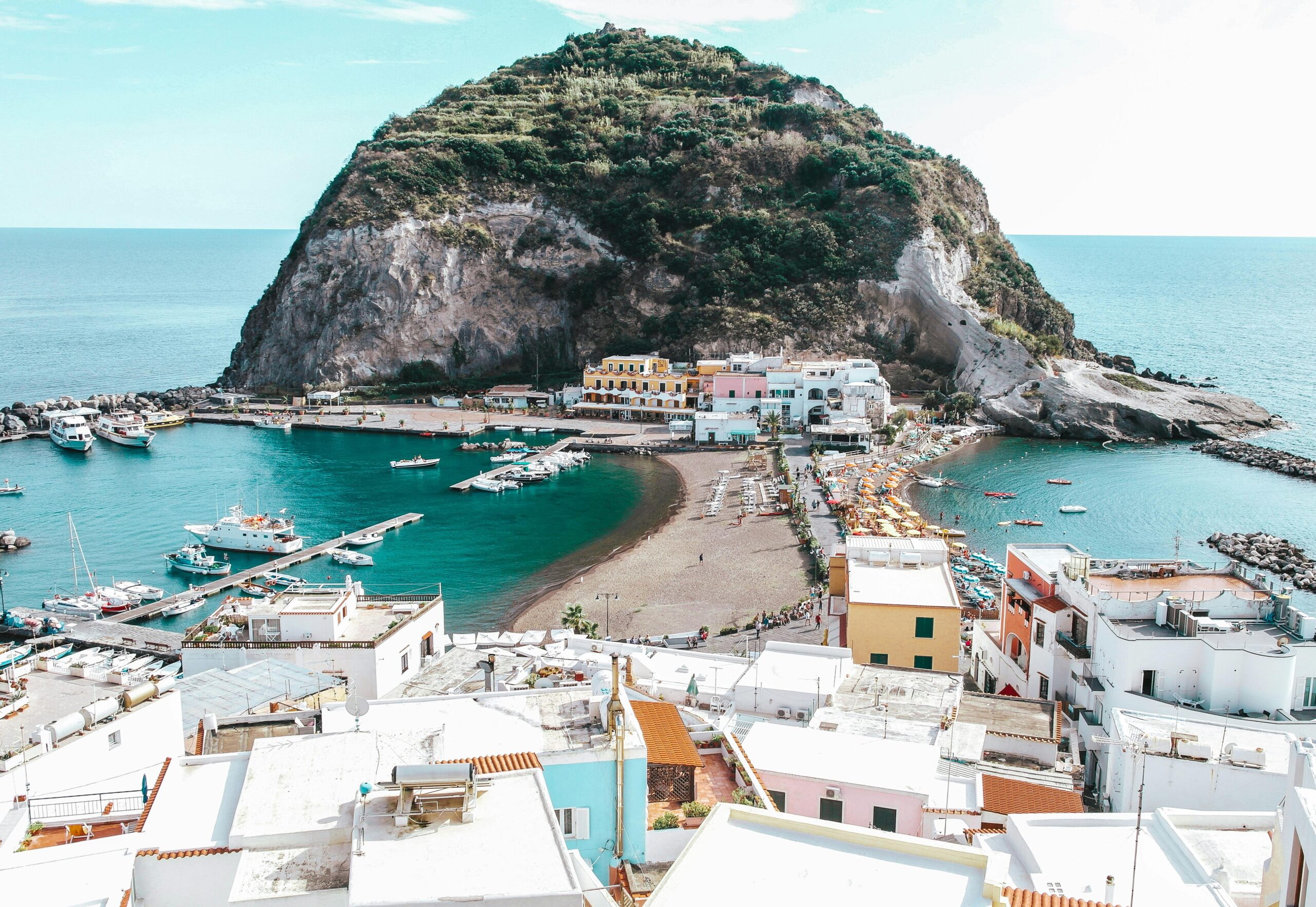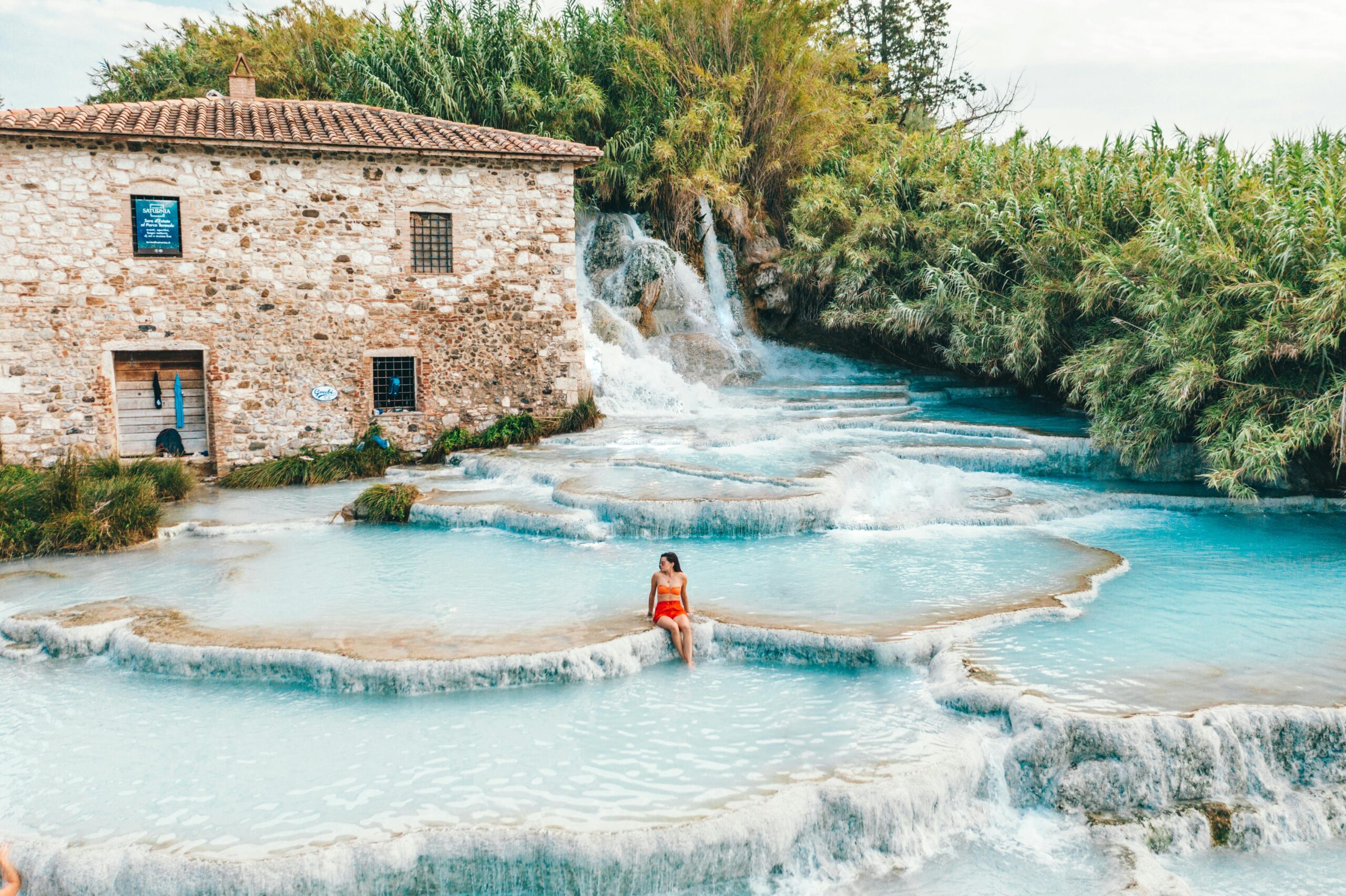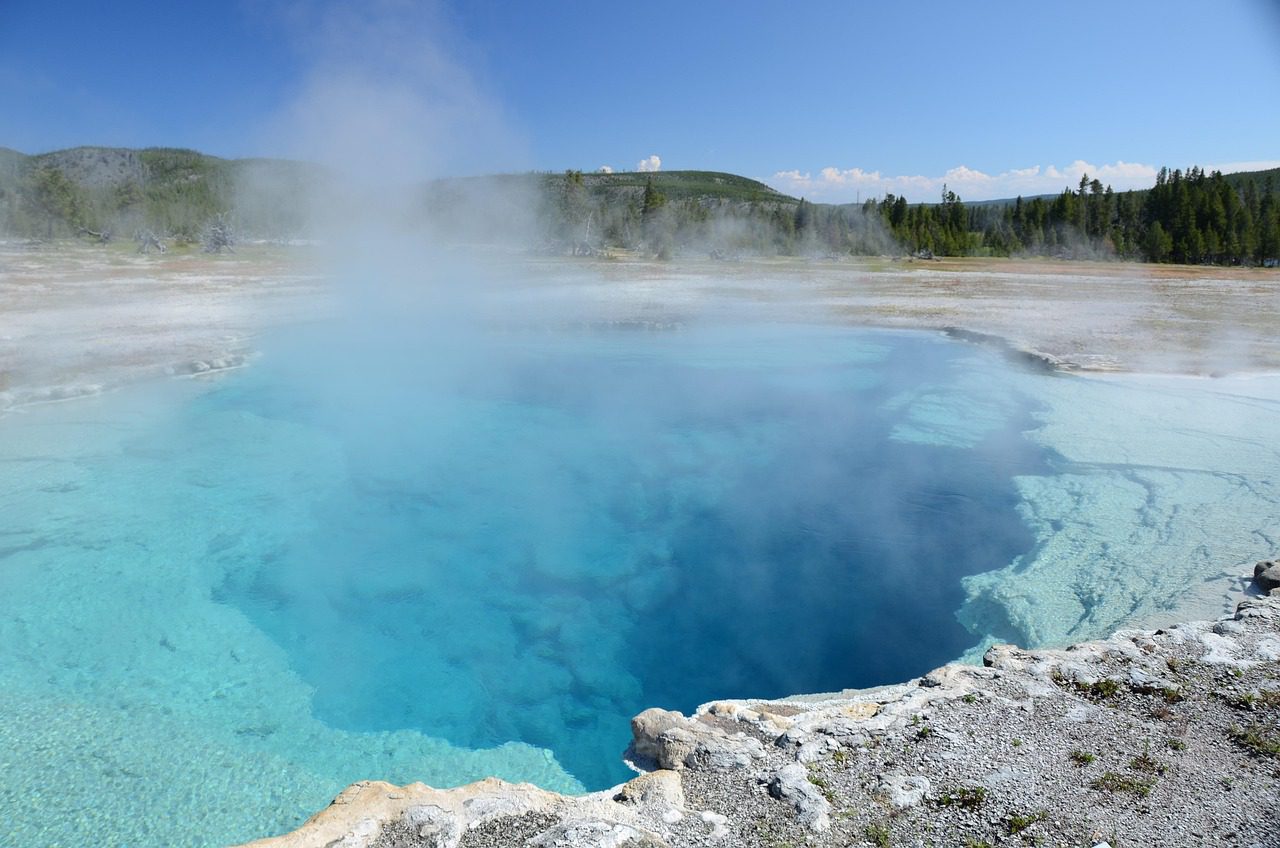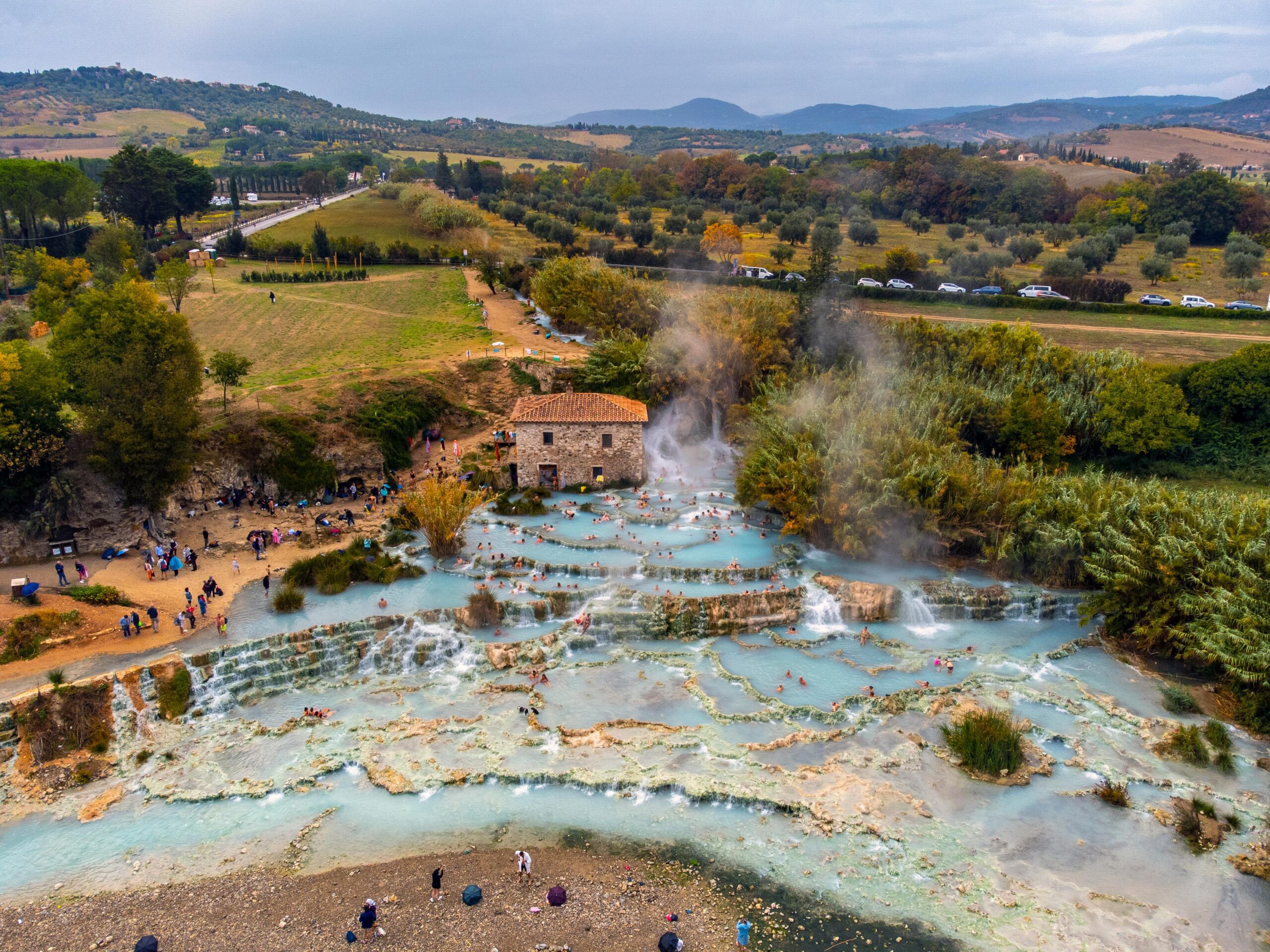Italy’s thermal spas are a testament to centuries of the Italian wellness culture, blending natural beauty, history, and relaxation. From the papal retreats of Viterbo to the idyllic springs of Sardinia, Italy offers an unparalleled spa experience. Whether seeking luxurious indulgence or free wellness retreats, these destinations provide something for everyone. Many of these spas cost very little and some are even free and/ or affordable, reflecting the lasting influence of the Popes and Italy’s enduring commitment to public health and leisure.
A Brief History of Roman Baths and the Popes’ Role
The Romans perfected the art of thermal baths, creating intricate bathhouses (terme) featuring hot, warm, and cold pools, steam rooms, and spaces for relaxation. These baths were communal hubs, reflecting a philosophy of holistic wellness. After the fall of the Roman Empire, many baths fell into disrepair. However, during the Renaissance, the Popes recognized the therapeutic benefits of thermal waters and spearheaded efforts to restore and expand thermal spas. Their patronage revitalized places like Viterbo, where the papal influence is particularly evident, especially because there remains a papal palace even to this day. Today, these spas remain cherished destinations for relaxation and healing.
Some of the most popular spa destinations in Italy:
1. Viterbo – Terme dei Papi (The Spa of the Popes)

Quick Facts
- History: Viterbo, known as the “City of Popes,” became a center of health and luxury in the 13th century. Its thermal springs have attracted visitors since ancient times, including Etruscans, Romans, and medieval aristocracy. The Papal Palace solidified its status as a retreat for clergy and nobility, drawn by the restorative properties of its sulfur-rich waters.
- Getting There: Approximately 90 minutes by car from Rome. By train, take the FL3 regional train from Roma Ostiense or Roma Trastevere to Viterbo Porta Romana or Viterbo Porta Fiorentina, which takes about 2 hours.
- Open to: Visitors of all ages. However, some specialized treatments at Terme dei Papi may have age restrictions or medical guidelines, so it is recommended to check their policies before visiting.
- Best Time to Visit: Spring and autumn for mild weather.
Thermal Spas in the area:
- Terme dei Papi: The “Baths of the Popes,” earned its name in the Middle Ages as a favored retreat for popes seeking the healing benefits of its sulfur-rich waters. Renowned since ancient times, these thermal springs were celebrated for treating ailments and promoting wellness. Today, the Terme dei Papi features an expansive thermal pool and specialized treatments, including mud baths, hydrotherapy, and massages. Entry fees vary depending on selected treatments, as all services are bundled with spa access. Cost: Terme dei Papi costs €12–€20, with additional fees depending on services.
- Bullicame Springs: A free alternative to Terme dei Papi, Bullicame Springs is a natural hot spring with mineral-rich waters historically praised for their therapeutic effects. Even referenced in Dante’s Divine Comedy, these springs have been used for centuries. However, facilities here are minimal, consisting of basic hot water pools without additional services.Entry to Bullicame Springs is free but has no facilities available other than the hot pool.
Nearby Attractions:
- Papal Palace (Palazzo dei Papi): A grand 13th-century palace that once housed popes, featuring Gothic architecture and a rich historical legacy.
- Villa Lante: A stunning Renaissance villa in Bagnaia, famed for its elaborate Italian gardens and ornate fountains.
- Viterbo Cathedral (Cattedrale di San Lorenzo): A Romanesque cathedral near the Papal Palace, showcasing significant artworks and a tranquil ambiance.
Where to stay:
- Hotel Salus Terme (High-End) – A high-end wellness hotel offering spa facilities and premium accommodations near the baths.
- Alla Corte delle Term (Mid-Range) – An elegant countryside resort with a private shuttle to the baths, blending comfort and convenience.
- Best Western Hotel Viterbo (Budget-Friendly) – A modern hotel with practical amenities and easy access to Viterbo’s main attractions.
Where to eat:
- Ristorante al Purgatorio – Lakeside restaurant on Lake Bolsena, offering seafood and Italian dishes.
- Trattoria da Giggetto – A family-run restaurant located on the shore of Lake Bolsena in Gradoli, Italy, specializing in fresh fish dishes.
- Trattoria del Moro – Lakeside eatery on Lake Bolsena, serving authentic Italian cuisine.
2. Ischia – The Island of Thermal Spas

Quick Facts
- History: Ischia, a volcanic island in the Tyrrhenian Sea, has been renowned for its healing thermal springs since ancient Greek and Roman times. Its volcanic waters, celebrated for their therapeutic properties, have attracted visitors for centuries.
- Getting There: Must take a Ferry from Naples. Ferries depart from Molo Beverello and Calata Porta di Massa piers, with services operating year-round. The earliest ferry departs around 06:00, and the latest at approximately 21:55. The journey takes between 50 minutes to 1.5 hours, depending on the ferry type.
- Open to: Families, couples, and solo travelers seeking relaxation and wellness.
- Cost: Poseidon Gardens €40–€50, Negombo €35–€50, and Nitrodi Springs from €30, with extra fees for treatments.
- Best Time to Visit: Summer (June – September) offers ideal weather for enjoying both thermal spas and outdoor attractions.
Thermal Spas in Ischia:
- Poseidon Gardens: As Ischia’s largest thermal park, Poseidon Gardens boasts over 20 thermal pools with temperatures ranging from 28°C to 40°C. Facilities include a steam grotto, a large sandy beach, and a wellness center offering massages and beauty treatments. The park also features sea-water pools and a children’s area.
- Negombo: Set within lush botanical gardens, Negombo offers 13 thermal pools, a private beach, and a variety of wellness services. Visitors can enjoy mud baths, hydrotherapy, and massages amidst Mediterranean art installations.
- Nitrodi Springs: Celebrated since ancient times for their healing properties, Nitrodi Springs are particularly known for skin benefits. Visitors can enjoy aromatherapy, hydrotherapy, mud treatments, facials, and specialized dermatological treatments designed to enhance skin health and overall well-being.
Nearby Attractions:
- Aragonese Castle: A notable 15th-century landmark offering stunning views and rich historical significance.
- La Mortella Gardens: A subtropical and Mediterranean botanical garden originally designed by Lady Susana Walton, featuring diverse plant species and scenic landscapes.
- Monte Epomeo: The island’s highest peak, providing panoramic views and hiking trails for outdoor enthusiasts.
- Sant’Angelo Village: A picturesque fishing village with colorful houses, quaint streets, and artisanal shops, perfect for a leisurely exploration.
Where to stay:
- Hotel La Marticana (Budget-Friendly): A relaxing retreat with thermal pools and stunning Mediterranean views, offering comfort at moderate prices.
- Strand Hotel Terme Delfini (Mid-Range): Peaceful hotel surrounded by gardens, offering wellness and relaxation.
- Hotel Solemar Terme: Comfortable accommodation with spa services and thermal pools. Waterfront luxury with a private thermal spa.
- Punta Molino Hotel Beach Resort & Spa (High-End): A stylish resort featuring a private beach, upscale amenities, and luxurious accommodations for discerning guests.
Where to eat:
- Ristorante La Terrazza di Mimi: A cozy spot in Forio with a terrace offering Tyrrhenian sea views and fresh seafood.
- Taverna Antonio: Nautical-themed restaurant in Ischia Porto with harbor views and fresh seafood.
- Zi Nannina à Mare: A stylish Tyrrhenian seaside restaurant in Ischia Porto, featuring Mediterranean cuisine and stunning waterfront scenery.
3. Tuscany – Budget Thermal Springs

Quick Facts
- History: Tuscany’s thermal springs have been cherished for over 2,500 years, first by the Etruscans, who believed the waters had divine healing properties, and later by the Romans, who built grand bathhouses around them. Today, these natural springs continue to attract visitors seeking relaxation and wellness.
- Open to: Everyone.
- Cost: Free.
- Best Time to Visit: Late spring or early autumn for pleasant weather and fewer crowds.
- Getting There: The best way to reach Tuscany’s thermal springs is by car, offering flexibility to explore the countryside. The nearest airports are in Florence (FLR), Pisa (PSA), and Rome (FCO), with rental cars readily available. Travelers by train can use Grosseto or Chiusi stations, with local buses and taxis providing access to the springs.
Thermal Spas in Tuscany:
- Bagno Vignoni: A medieval village with a unique thermal square, Bagno Vignoni features an ancient thermal pool once frequented by Lorenzo de’ Medici. While bathing in the central pool is not allowed, visitors can enjoy the free natural pools along the Parco dei Mulini trail. The waters are known for their therapeutic properties, and nearby hotels provide additional spa treatments for those seeking luxury wellness experiences.
- Cascate del Mulino and Saturina Hot Springs: One of Italy’s most famous thermal springs, renowned for its cascading travertine pools with warm, sulfur-rich waters at 37.5°C. The mineral-rich waters are believed to promote circulation, skin health, and relaxation. Visitors can soak in the free natural pools and waterfalls, while the nearby Terme di Saturnia resort offers premium spa treatments, including massages, mud baths, and wellness programs.
Nearby Attractions:
- Val d’Orcia: A UNESCO-listed valley with rolling hills, cypress-lined roads, and picturesque villages.
- Pitigliano: A medieval town built on dramatic tufa cliffs, rich in Etruscan and Jewish history.
- Civita di Bagnoregio: Known as the “dying town,” this isolated village offers breathtaking scenery and a glimpse into medieval life.
Where to stay:
- Tuscany Hotel Alle Dune (Budget-Friendly): A 4-star hotel with affordable rates, located near nature with direct beach access.
- Hotel I Ginepri (Mid-Range): Known for its thalassotherapy spa and proximity to pristine beaches.
- Argentario Golf & Wellness Resort, Autograph Collection (High-End): A luxury resort featuring a golf course, wellness center, and stunning views of the Tuscan coast.
Where to eat:
- Osteria Del Mare: A seafood restaurant in Follonica known for its fresh and flavorful dishes.
- Il Cardellino: A charming eatery offering traditional Tuscan cuisine with a modern twist.
- La Tana del Pirata: A unique Tyrrhenian seaside restaurant serving fresh seafood and Italian specialties in Marina di Castagneto.
4. Lazio– A Region of Hidden Springs

Quick Facts
- History: Located in central Italy, this region is steeped in history and natural beauty. Renowned for its volcanic landscapes, Lazio features numerous hot springs formed by ancient geothermal activity. During the Roman Empire, these springs were highly valued for their healing properties and were frequented by nobles and commoners alike.
- Open to: Everyone.
- Cost: Entry to Terme di Vulci costs between €17 and €25, while Terme di Stigliano ranges from €30 to €50, depending on spa access and treatments. Palazzo Fiuggi is a high-end retreat, with wellness packages starting at approximately €500 per night for accommodations and treatments.
- Best Time to Visit: Spring and autumn, when the weather is mild.
- Getting There: Terme di Vulci is 120 km northwest of Rome, accessible by car via the SS1 Aurelia/E80, or by train to Montalto di Castro followed by a taxi. Terme di Stigliano, 60 km from Rome, is reachable by car via the A12 or train to Cerveteri-Ladispoli, then taxi. Palazzo Fiuggi, 90 km east of Rome, is best reached by car via the A1 or bus from Anagnina station to Fiuggi.
Thermal Spas in Lazio:
- Terme di Vulci: Set among the ancient ruins of Vulci, this modern spa offers four mineral-rich thermal pools with varying temperatures, believed to provide therapeutic benefits. The spa also includes mud baths and a wellness center, making it a popular retreat for relaxation.
- Terme di Stigliano: Located in a serene, green valley, Terme di Stigliano is known for its natural steam caves and mineral-rich waters, which have been used for centuries to treat respiratory and skin conditions. The facility offers thermal pools, mud therapies, and massage treatments.
- Palazzo Fiuggi: A luxurious wellness retreat that blends historical charm with advanced health programs. It specializes in medical wellness, detox therapies, and hydrotherapy using the region’s famous Fiuggi waters, known for their purifying effects.
Nearby Attractions:
- Villa d’Este in Tivoli: A UNESCO World Heritage Site, known for its Renaissance gardens and stunning fountains.
- Hadrian’s Villa: An ancient Roman archaeological complex and luxurious retreat of Emperor Hadrian.
- Lake Albano: A beautiful volcanic crater lake perfect for kayaking, paddleboarding, and enjoying lakeside cafes.
Where to stay:
- Grand Hotel Dei Cesari (Mid-Range): A seaside hotel offering modern amenities and easy access to the coast.
- Il Fogliano Hotel (High-End): A luxury beachfront hotel focusing on sustainability and comfort.
- Hotel Isola Sacra (Budget-Friendly): A perfect blend of elegance and convenience, close to Fiumicino and the coast.
Where to eat:
- Isola del Pescatore: Located by the Tyrrhenian Sea, this place is known for fresh seafood dishes and scenic views.
- Trattoria del Cimino dal 1895: A Michelin-starred restaurant offering creative dishes made with local ingredients.
- Il Caminetto Montefiascone: Renowned for its delicious local flavors and proximity to Lake Bolsena.
5. Sicily – Segesta and Beyond

Quick Facts
- History: Segesta, nestled in western Sicily, derives its name from the legendary Trojan hero Aegestes (or Segestes), who is said to have founded the city. Its natural hot springs were revered by the Greeks and Romans as sacred waters. Segesta’s timeless charm has also been featured in films like The Sicilian (1987), showcasing its ancient ruins and stunning landscapes.
- Open to: All visitors.
- Cost: Segesta Hot Springs are free, while entry to the Vulcano Thermal Baths costs around €3–€5. Alì Terme Thermal Baths start at €15–€20, with additional costs for specialized treatments.
- Best Time to Visit: Late spring (May to June) is the best time to visit, offering mild temperatures and fewer tourists.
- Getting There: To reach Segesta from Palermo, drive about 1 hour (80 km) via the A29 highway. Alternatively, you can take a bus or join a guided tour for a more relaxed journey. If traveling from Trapani, it’s only about 30 minutes by car.
Thermal Spas in Sicily:
- Free Segesta Hot Springs: Near the ancient ruins of Segesta, these rustic, open-air springs date back to the Elymian and Roman eras. Rich in alkaline-sulphurous waters with anti-inflammatory and skin-soothing benefits, visitors can enjoy natural hot pools and riverside mud patches surrounded by lush landscapes and ancient Greek ruins.
- Vulcano Thermal Baths: On Vulcano Island in the Aeolian archipelago, these baths are steeped in myth, linked to Vulcan, the Roman god of fire. The geothermal site offers mineral-rich mud baths, sulphurous hot pools for skin and respiratory health, and natural steam vents for detox, set against dramatic volcanic scenery with sea views.
- Alì Terme Thermal Baths: Located near Messina on Sicily’s eastern coast, Alì Terme has been a wellness hub since Roman times, famed for its sulphur-rich waters from the Peloritani Mountains. The spa features hydrotherapy pools, inhalation treatments for respiratory issues, and mineral mud therapies for skin and joint health, all in a tranquil seaside setting.
Nearby Attractions
- Ancient Ruins of Segesta: Explore the stunning Doric temple and Greek theater.
- Zingaro Nature Reserve: Coastal trails and secluded beaches with breathtaking views.
- Erice: A medieval hilltop town with cobblestone streets and panoramic vistas.
- Trapani Salt Pans: Witness traditional salt harvesting and pink-hued pools at sunset.
Where to stay:
- Hotel Villa Romana (Mid-Range): An affordable coastal hotel combining comfort with modern facilities and scenic vistas.
- Grand Hotel Faraglioni (High-End): A picturesque stay overlooking iconic Faraglioni rock formations, offering luxury amenities.
- Sunset Hotel (Budget-Friendly): An elegant hotel renowned for its breathtaking sunset views and prime location.
Where to eat:
- Ciurma Palermo: Waterfront dining with fresh seafood.
- aLevante Restaurant: Michelin-star restaurant with dishes inspired by Sicilian flavors.
- Ristorante La Tonnara: Known for its traditional tuna specialties.
Ready to immerse yourself in Italy’s thermal wonders? At Waterviews Travel, we specialize in self-guided tours that enable you to experience these stunning destinations at your own pace. Contact us today at se*****@**************el.com or call 1-800-735-9790 to personalize your trip and embark on your dream wellness trip.





Comments are closed